USB, WiFi, Cell, Satellite, Bluetooth, RFID — Which Connectivity Is Right for Me?
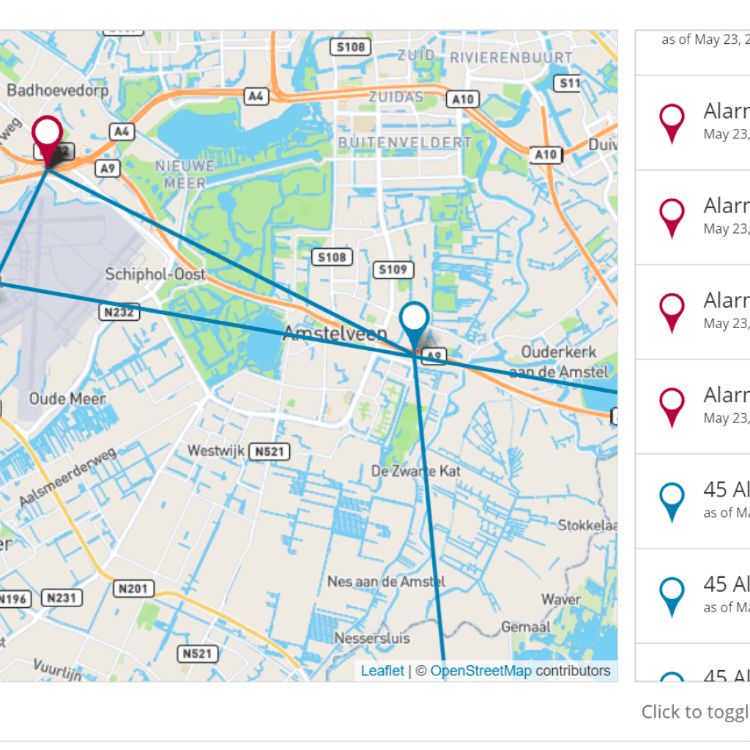 Supply chain monitoring and recording environmental factors and product conditions is one of the most important steps businesses can take to reduce inventory and equipment damage. Proper transportation monitoring can enable operators to detect problems before they occur as well as identify points in the supply chain where items are prone to damage or mishandling — and hold the right parties responsible.
Supply chain monitoring and recording environmental factors and product conditions is one of the most important steps businesses can take to reduce inventory and equipment damage. Proper transportation monitoring can enable operators to detect problems before they occur as well as identify points in the supply chain where items are prone to damage or mishandling — and hold the right parties responsible.
One important decision that supply chain managers must face when implementing systems to monitor their operations or supply chain is what type of connectivity is appropriate for their needs.
A variety of options are available from SpotSee, including USB, WiFi, Cell, Satellite, Bluetooth, and RFID tracking. What are the pros and cons of each option and which type of connectivity is right for your business?
We explain these popular connectivity options and examine situations where each one is commonly used.
USB Downloads
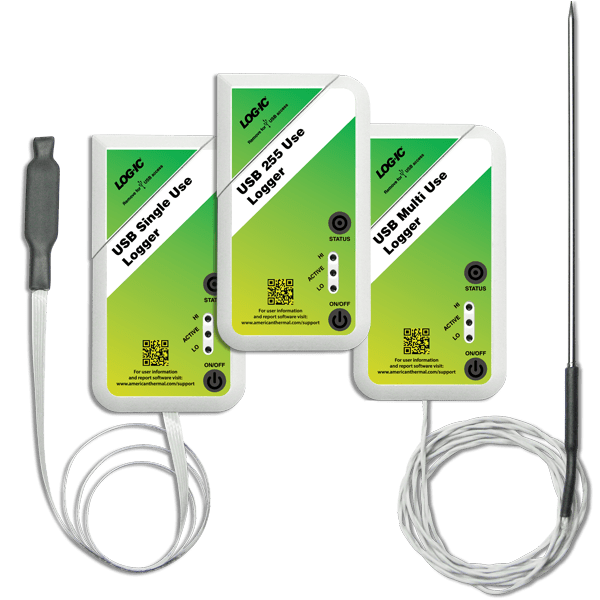 Supply chain monitoring devices that allow you to download the data via USB are a great option for businesses wanting to analyze and identify problems in their logistics and transportation. USB downloads don’t allow for real-time monitoring, but can be a great option for businesses that don’t require real-time data.
Supply chain monitoring devices that allow you to download the data via USB are a great option for businesses wanting to analyze and identify problems in their logistics and transportation. USB downloads don’t allow for real-time monitoring, but can be a great option for businesses that don’t require real-time data.
USB devices are an affordable choice and easy to set up. Downloading data allows businesses to discover exactly when problems are occurring so they can take corrective action for future shipments.
Some examples of products that can benefit from this technology include medical devices, medical equipment, and power generation equipment that need to remain within a certain temperature range during transport.
Supply chain monitoring devices with USB downloads allow you to gather temperature, impact, vibration, and other environmental data to see where and when problems are occurring in your supply chain or during transportation. If you’re looking for ways to optimize your supply chain, this is an ideal option, since you can analyze post-shipment data and make changes for next time. Visit our products page to learn more about SpotSee USB download devices including Shocklog 298, which records shock and vibration data, and LOGIC temperature recorder, which monitors and records temperature.
WiFi
Some operations benefit from real-time data — being able to detect problems and correct them as they occur. Sudden equipment failure can lead to delays and operation shutdowns, which can result in significant loss of revenue.
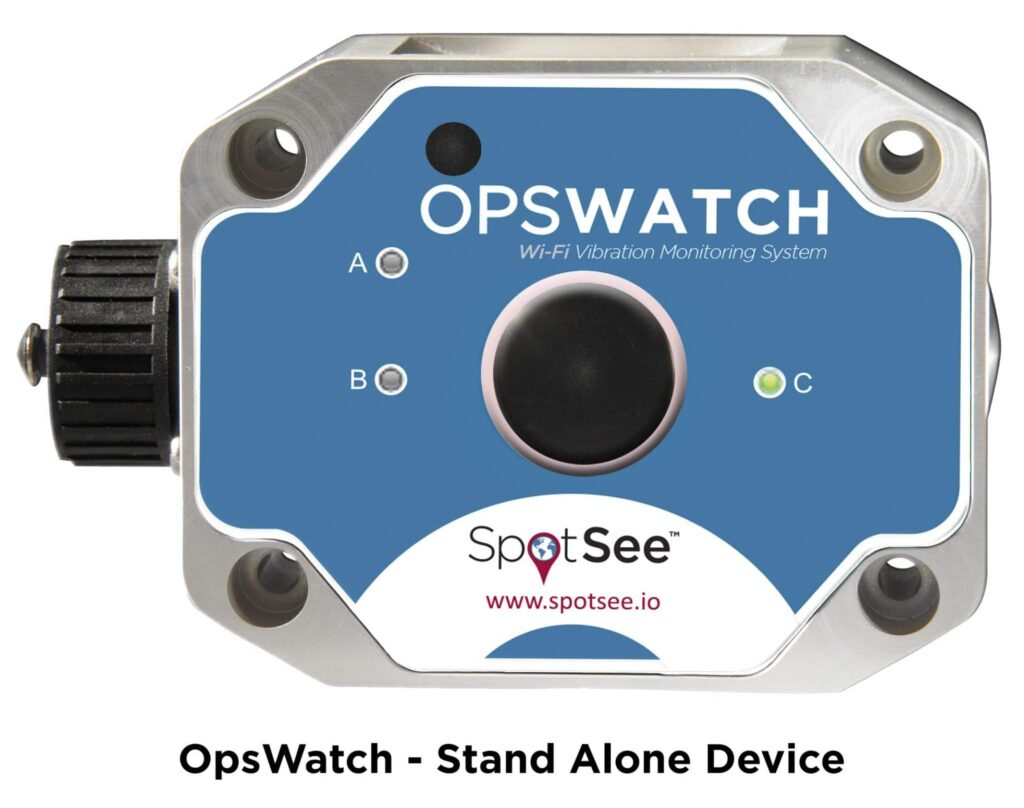 WiFi can be a good option for businesses that need to monitor environmental data in a localized area and might be the simplest option if you already have an internet connection. Connecting your supply chain monitoring devices to your WiFi allows you to continuously monitor your equipment, detect issues before they occur, and take appropriate corrective actions. You can set alerts, and as long as your WiFi is up and running, you’ll always know when equipment is operating out of its safe threshold.
WiFi can be a good option for businesses that need to monitor environmental data in a localized area and might be the simplest option if you already have an internet connection. Connecting your supply chain monitoring devices to your WiFi allows you to continuously monitor your equipment, detect issues before they occur, and take appropriate corrective actions. You can set alerts, and as long as your WiFi is up and running, you’ll always know when equipment is operating out of its safe threshold.
Drilling, mining, and construction equipment are some examples where WiFi monitoring is commonly used and immensely beneficial. Equipment can experience increased vibrations before they are about to fail, so proper monitoring gives operators a chance to proactively address such problems. WiFi is ideal for stationary operations, but not so much an entire supply chain, since the device won’t always be in WiFi range when it’s on the move.
WiFi monitoring devices like OpsWatch allow you to detect when vibrations or temperatures go outside an acceptable range. Explore OpsWatch to learn about how it can help you monitor your equipment and keep your operations running smoothly.
Cellular
For businesses wanting to monitor product over the entire transport, cellular connectivity might be a good option. Cellular connectivity gives you access to data 24/7 from anywhere in the world.
Some considerations before choosing cellular include costs (will you incur larger costs when roaming?) and coverage. If a shipment is going overseas, for example, you will want to make sure you have cellular coverage if you need real-time monitoring. SpotSee offers low-cost flat rates with no roaming charges, so you avoid unexpected charges — and always stay connected and in-the-know.
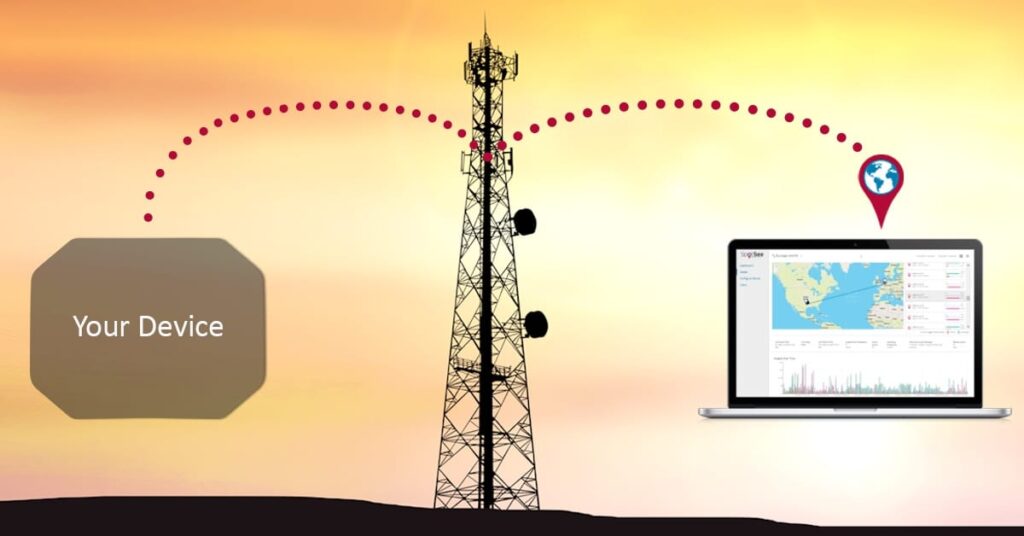 Examples of products that may benefit from transportation monitoring via cellular connectivity include computer and electronic devices, turbines and heavy equipment, or fragile glass windows and doors. Real-time monitoring means vendors can address problems as they occur or stop damaged shipments before they reach their destination. Companies can save substantial amounts of money by addressing damage before shipments arrive and optimizing supply chains to avoid it in the future.
Examples of products that may benefit from transportation monitoring via cellular connectivity include computer and electronic devices, turbines and heavy equipment, or fragile glass windows and doors. Real-time monitoring means vendors can address problems as they occur or stop damaged shipments before they reach their destination. Companies can save substantial amounts of money by addressing damage before shipments arrive and optimizing supply chains to avoid it in the future.
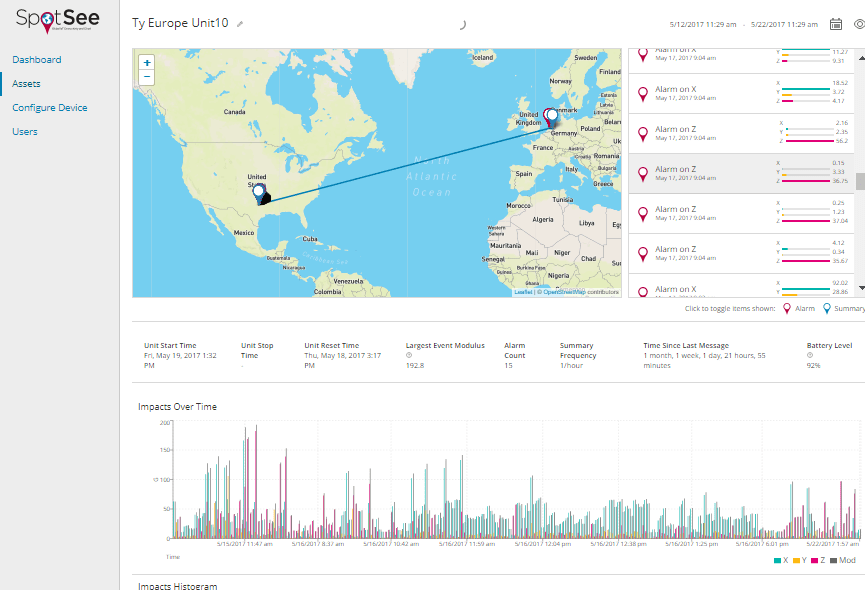 To learn more about how cellular supply chain and transportation monitoring devices can help your business, explore SpotBot Cellular and ShockLog Cellular. Or, check out SpotSee Connectivity, our network and platform for around-the-globe monitoring using the SpotSee Cloud.
To learn more about how cellular supply chain and transportation monitoring devices can help your business, explore SpotBot Cellular and ShockLog Cellular. Or, check out SpotSee Connectivity, our network and platform for around-the-globe monitoring using the SpotSee Cloud.
Satellite
 Another global option for monitoring shipments in real time is by satellite. Satellite connectivity allows you to track shipments around the globe and get near-instant reporting. Detecting unacceptable conditions gives you the opportunity to take corrective action before your items reach their destination.
Another global option for monitoring shipments in real time is by satellite. Satellite connectivity allows you to track shipments around the globe and get near-instant reporting. Detecting unacceptable conditions gives you the opportunity to take corrective action before your items reach their destination.
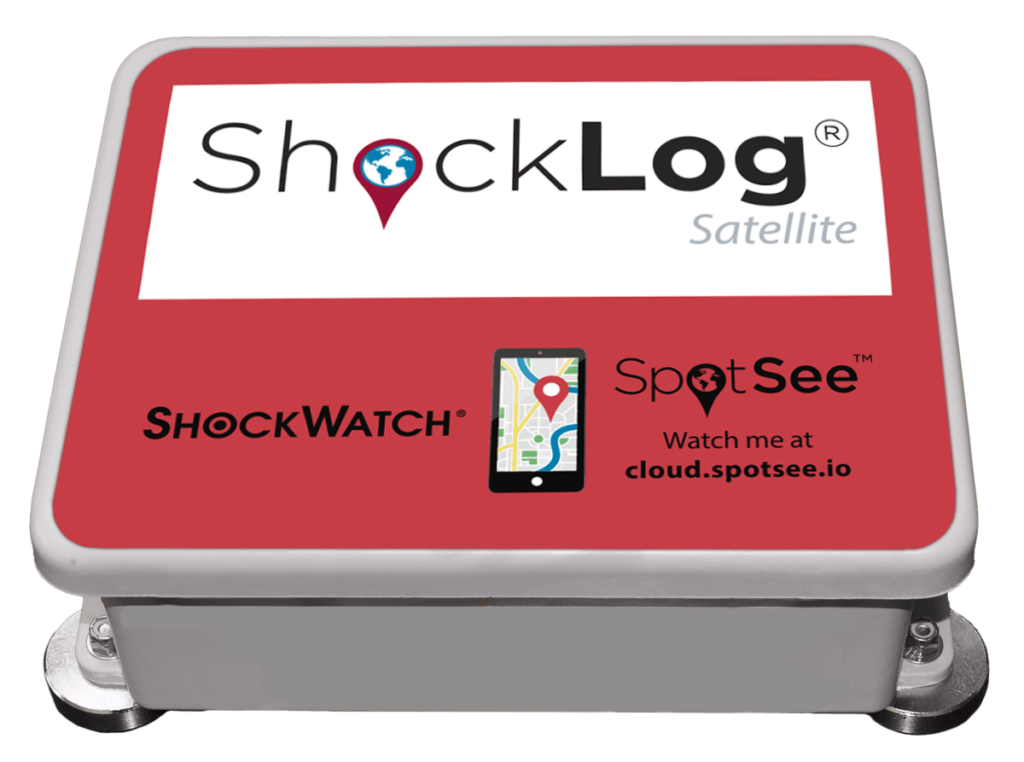 Satellite communication requires a line of sight with the satellite, so it may not be the best option if your shipment is going through tunnels in the mountains or underground by train, for example. However, satellite connectivity reaches far corners of the world that may not be equipped with cellular connectivity. If you regularly deal in rural or off-the-grid environments, satellite gives you a clear window into your supply chain.
Satellite communication requires a line of sight with the satellite, so it may not be the best option if your shipment is going through tunnels in the mountains or underground by train, for example. However, satellite connectivity reaches far corners of the world that may not be equipped with cellular connectivity. If you regularly deal in rural or off-the-grid environments, satellite gives you a clear window into your supply chain.
ShockLog Satellite monitors vibration, impact, temperature, and other environmental factors as your assets move to their final destination. It can send email or text alerts when unacceptable conditions have occurred so you can get ahead of the issue before it becomes a problem for the receiver. Visit the ShockLog Satellite product page to learn more.
Bluetooth
Bluetooth is a wireless communication protocol that facilitates device communication within a short distance, usually under 30 feet. Bluetooth can be used for local monitoring, but unlike WiFi, it’s also a sensible option outside of your own network, because Bluetooth enabled monitors allow you to wirelessly collect your data with Bluetooth-enabled phone or tablet. There is no USB cable required to download.
 Some popular applications for Bluetooth monitoring include monitoring humidity inside transformers and other electronic devices, monitoring conditions of equipment rentals, and detecting humidity and shock levels when transporting furniture and automotive parts.
Some popular applications for Bluetooth monitoring include monitoring humidity inside transformers and other electronic devices, monitoring conditions of equipment rentals, and detecting humidity and shock levels when transporting furniture and automotive parts.
SpotBot BLE allows businesses to monitor factors like humidity, temperature, impact, and tilt throughout the supply chain and use Bluetooth communication to download the data at the end of the journey or anywhere along the way.
RFID (Radio Frequency Identification)
Another connectivity option worth considering is RFID. Typical RFID tracking systems consist of antennas, tags for the individual units being monitored, and readers. SpotSee RFID solutions integrate flawlessly with existing ERP systems, adding even more transparency to your supply chain.
The range of RFID devices depends on the frequency of transmission. Ultra high frequency RFID devices can reach up to 350 feet. RFID devices are either active (containing their own power source) or passive (powered by a reader at close range, usually under 25 feet). Items with active RFID devices can transmit location information up to 100 feet.
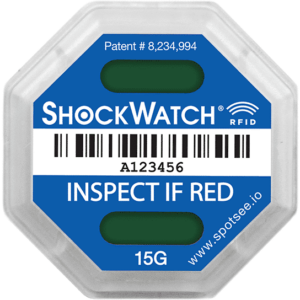 RFID connectivity is commonly used for inventory and asset tracking and monitoring. Furniture, glass, electronics, and food are some items that may get tracked using RFID connectivity. One of the fastest growing RFID tracking applications is in the pharmaceutical industry: RFID acts as a backup to pharma’s “track and trace” — AKA “serialization” — mandate.
RFID connectivity is commonly used for inventory and asset tracking and monitoring. Furniture, glass, electronics, and food are some items that may get tracked using RFID connectivity. One of the fastest growing RFID tracking applications is in the pharmaceutical industry: RFID acts as a backup to pharma’s “track and trace” — AKA “serialization” — mandate.
You can think of RFID as a more robust replacement for barcodes. But unlike barcodes, the data can be integrated into the device. Additionally, RFID devices can locate items and track environmental conditions.
ShockWatch RFID uses RFID technology to track inventory, indicate if unacceptable handling has occurred, and includes a visual indicator to prevent and display product mishandling. Learn more about how ShockWatch RFID can help your business.
Choosing the Right Connectivity
Tracking inventory and monitoring equipment can save businesses money and improve the experience for the end customer. If you want to learn more about how SpotSee’s products can help you, visit our products page or fill out the contact form below to find the right program for your business.







